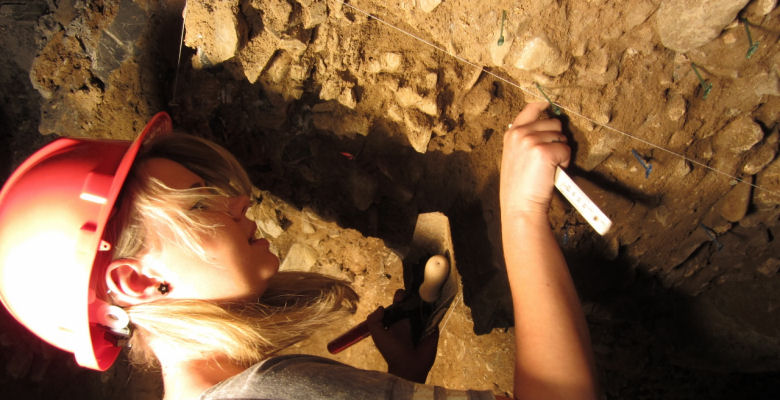Extracting the past

Anthropology students from Liverpool John Moores University and Vancouver Island University, Canada, are working together to uncover the mystery behind the bones of the Scladina Cave.
Students attend the excavation of the archaeological cave in Andenne, Belgium, with their lecturers every year for five weeks. In addition to learning cave excavation, for two of those weeks they work in the lab studying the collections. This year, they are aiming to find the remaining bones of a Neanderthal child by checking the hundreds of thousands of fossils extracted from the cave. The extensive human osteology training they received during their degree makes them well suited to this task.
Isabelle De Groote, paleoanthropologist at Liverpool John Moores University commented:
"What we know so far is that the child lived here about 90,000 years ago in the Meuse Valley. We do not know how she died or whether her body was brought into the cave by other Neanderthals for her burial. Until now, only her jaw and some teeth were found, but the rest of the skull, and perhaps the entire skeleton, may be hiding inside the thousands of bones extracted from the cave over the past 25 years. Juvenile Neanderthal skeletons are rare and finding the rest of her body will help in understanding how Neanderthals grew up.
"During the past thirty years, archaeologists have extracted hundreds of thousands of bones from the Scladina cave. LJMU and Vancouver Island University are working together to examine all of them. The research may take years. It's not always easy to tell the difference between a human and Neanderthal fossil or an animal. The skeleton of the cave bear, for example , is quite close. There are small differences, but it takes an expert eye to see them, especially if the bones are fragmented. "
"This is excellent practical work for our students. They may discover the rest of the Neanderthal child or discover a new Neanderthal all together."
Professor David Hopwood from the Department of Anthropology at Vancouver Island University said:
"The work to uncover the remains of the Scladina child among the hundreds of thousands of bone fragments collected over approximately 20 years is a difficult job and Dan, Céleste and Stephen have all represented LJMU well. The students from LJMU and VIU quickly formed an excellent partnership and demonstrated an impressive degree of patience, dedication and a well-trained osteological eye. I look forward to the continued collaboration between LJMU and VIU at Scladina."
The story was covered by international press


